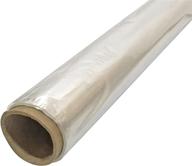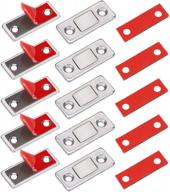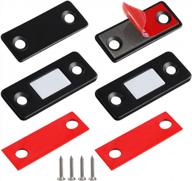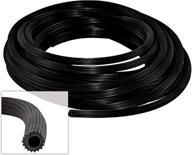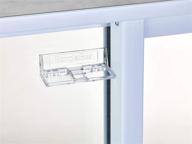How to Install a Sash Lock on a Sliding Window
Installing a sash lock on a sliding window is a relatively straightforward process that can usually be done in less than an hour. Here are the steps to install a sash lock:
Materials Needed
- Sash lock
- Screwdriver
- Drill with drill bits
- Tape measure
Steps
- Measure height of window sash and mark center point. This is where sash lock will be installed.
- Hold sash lock in place and mark screw holes. Make sure lock lines up evenly.
- Drill pilot holes in marked locations using correct drill bit size.
- Hold lock in position and attach with screws. Do not overtighten.
- Check lock for smooth operation and engagement with window frame.
-
- If needed, adjust position of lock catch plate on frame so it aligns properly.
- Tighten screws fully once the lock is properly aligned.
Be sure to follow the specific installation instructions that come with your sash lock. With the right tools and proper alignment, installing a sash lock can significantly improve the security and weather sealing of your sliding windows.
Top products in 🪛 Window Hardware
How to Adjust a Sash Lock for a Tight Fit
Over time, sash locks on sliding windows can become loose and allow air drafts into your home. Adjusting the lock is an easy way to improve the seal and stop air leaks.
Materials Needed
- Phillips head screwdriver
- Pliers
Steps to Adjust the Lock
- Check the alignment of the lock tongue on the window and the keeper on the frame. Make sure they match up.
- If misaligned, loosen the keeper screws and adjust its position so it aligns with the lock tongue.
- Tighten the keeper screws once aligned.
- Close the window and engage the lock to check the fit. Make sure the lock tongue fits snugly into the keeper.
-
- If too loose, use a screwdriver to tighten the lock tongue screws on the window sash. Do not overtighten.
- If too tight, loosen the screws slightly until the fit is snug but not too hard to close.
- Open and close the window, engaging the lock each time, to test the fit. Adjust screws as needed until the desired tightness is reached.
Proper adjustment requires some trial and error. Take your time and make small adjustments to achieve a good seal. Keep windows operating smoothly while eliminating annoying drafts.
With some basic tools and patience, you can fine tune your sash locks for a tight, rattle-free fit. Properly aligned and adjusted locks will help seal out cold air and keep your home comfortable.
How to Remove an Old Sash Lock and Replace It
Replacing an old, worn out sash lock is a relatively simple project that can be done in just a few steps. Here is how to remove and replace a sash lock on a sliding window:
Materials Needed
- Replacement sash lock
- Phillips head screwdriver
- Tape measure
Steps
- Remove the window sash from the frame and place it on a flat surface.
- Using a screwdriver, unscrew and remove the old sash lock from the sash.
- Measure and mark the sash where the new lock will be installed.
-
- Align the new lock on the marks and use it as a template to mark new screw holes.
- Drill pilot holes for the screws.
- Attach the new sash lock using the screws.
-
- Make sure the lock tongue aligns properly with the frame keeper.
- Do not overtighten the screws.
- Reinstall the window sash and test the lock for smooth operation.
- Adjust keeper alignment if needed to ensure a tight fit.
With a few basic tools and the right replacement part, installing a new sash lock is an easy DIY project. Just follow the steps to remove the old lock and install the new one for an improved seal and peace of mind.
Another interesting products
How to Stop Air Leaks Around Sliding Windows with Sash Locks
Old sliding windows can often develop annoying air leaks around the sashes, allowing cold air into the home. Properly installing and adjusting sash locks can help stop these drafts.
Causes of Air Leaks
- Poor seal between sash and frame
- Misaligned or loose-fitting sash lock
- Worn out weatherstripping
- Age and shrinkage of window and frame
Using Sash Locks to Stop Leaks
- Clean any debris and buildup from window tracks and sash channels.
- Inspect weatherstripping and replace any sections that are missing, torn or flattened.
- Check alignment of sash lock tongue and frame keeper plate. Adjust if needed.
-
- Loosen keeper screws and adjust to align with lock tongue.
- Tighten screws once aligned.
- Close window and engage lock to test tightness of fit.
-
- If too loose, tighten lock tongue screws for a snugger fit.
- Do not overtighten or window will be hard to open.
Properly aligned sash locks create a tight seal between the movable sash and the window frame. Combined with weatherstripping, sash locks prevent drafts and air leaks around older sliding windows.
Take time to inspect locks and seals around windows. A few adjustments can save energy and keep your home comfortable.
How to Choose the Right Sash Lock Size for Your Windows
Choosing the proper sash lock size ensures a tight, secure fit for your sliding windows. Follow these steps to select the right lock size:
Measure Your Windows
- Width of window sash
- Height of lower window sash
- Thickness of sash where lock installs
| Sash Width | Lock Size |
|---|---|
| Up to 28" | 4-5" |
| 28" to 38" | 5-7" |
| Over 38" | 7-10" |
Choose Lock Type
- Cam or spring action for ease of use
- Profile shape to match window sash
- Coating like white, bronze, or antique brass
Check These Factors
- Strength and durability of lock case
- Smooth operation when opened and closed
- Compatibility with your window material and frame
- Availability of replacement parts
Carefully measuring your sliding windows and considering the design and features of the lock will help you select the optimum size. Take your time to choose the right sash lock for a custom fit and years of smooth operation.
How to Fix a Stuck or Broken Sash Lock
It's frustrating when a sliding window sash lock stops working properly. But whether it's stuck, jammed, or broken, a sash lock is usually repairable with some basic tools and troubleshooting.
Common Sash Lock Issues
- Lock tongue won't engage into keeper
- Lock is stuck in closed or locked position
- Parts are bent or broken
- Screws are loose causing misalignment
Fixing a Stuck Sash Lock
- Check for dirt, paint, or debris interfering with the lock operation.
- Spray lock mechanism with penetrating oil - work the lock back and forth.
- Tighten or realign loose screws attaching lock to window.
- Adjust keeper alignment if needed so tongue can fully engage.
- Replace any bent or broken components like tongues or springs.
Replacing a Broken Lock
- Remove broken sash lock mechanism from window.
- Install new lock using original screw holes if possible.
- Align parts for smooth operation and positive locking.
- Make adjustments as needed to eliminate binding or stiffness.
Repairing sash locks keeps windows functioning properly. Start by inspecting the lock for visible issues. Cleaning and lubricating can often get a stuck lock working again. For broken parts, new replacement locks are inexpensive and easy to install.
Similar products
How To Install PRIME-LINE F 2588 Sash Lock On A Sliding Window?
To install the PRIME-LINE F 2588 Sash Lock on a sliding window, follow these steps:
- First, ensure that the window is clean and free of debris.
- Next, position the sash lock on the window where you want it to be installed.
- Mark the location of the screw holes with a pencil.
- Drill pilot holes for the screws.
- Attach the sash lock to the window using the screws provided.
- Test the lock to ensure that it is functioning properly.
What Tools Are Needed To Install PRIME-LINE F 2588 Sash Lock On A Sliding Window?
To install the PRIME-LINE F 2588 Sash Lock on a sliding window, you will need the following tools:
All the necessary fasteners are included for an easy installation, so you don't need any additional tools. However, it's always a good idea to have a drill and drill bits on hand in case you need to drill pilot holes for the screws. For further dimensional information, please see the line drawing.
Is There An Installation Manual Or Video Available For PRIME-LINE F 2588 Sash Lock?
Yes, there are installation instructions available for the PRIME-LINE F 2588 Sash Lock. According to the product listing on Amazon, each set includes simple instructions for installation. Additionally, the Prime-Line website provides a PDF file of the installation instructions for the F 2588 Sash Lock. Unfortunately, there doesn't seem to be any video tutorials available for this specific product. However, the installation process is relatively straightforward and can be completed with just a Phillips head screwdriver. If you need further assistance, you can always consult a professional or contact the manufacturer for support.
Where Can I Find The Installation Manual For PRIME-LINE F 2588 Sash Lock?
Yes, the installation manual for the PRIME-LINE F 2588 Sash Lock is available. You can find it on the Prime-Line website. The manual is in PDF format and provides detailed instructions on how to install the sash lock on your sliding window. Additionally, each set of the sash lock includes simple instructions for installation. The installation process is relatively straightforward and can be done with a Phillips head screwdriver. If you need further assistance, you can always consult a professional or contact the manufacturer for support.






